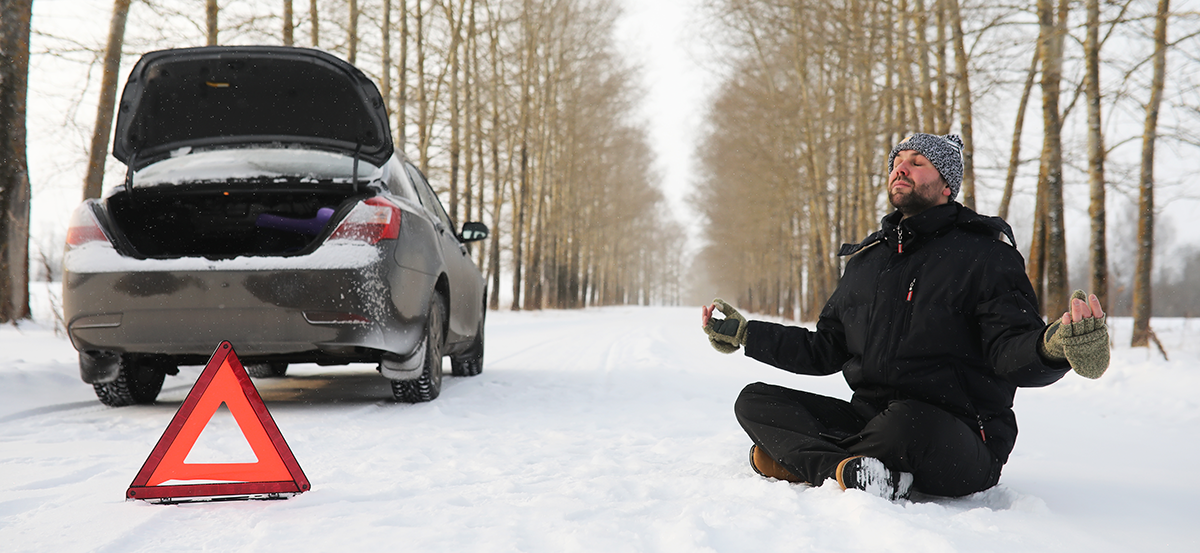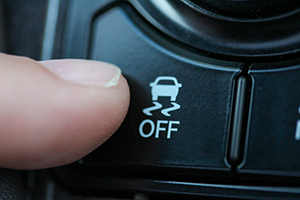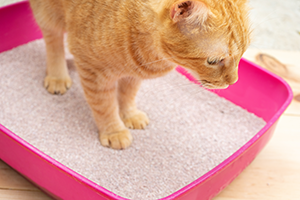7 Things To Do When You're Stuck In Snow

As the winter season sets in around St. Louis, driving conditions can sometimes become a challenge, especially when snow blankets the roads. At Schicker Ford of St. Louis, we prioritize the safety and well-being of our customers. That said, we wanted to share with you some insights (that have worked for a lot of us before in the past) on what to do if you find yourself stuck in snow while driving your Schicker car, truck, or SUV.
1. Don't Panic
If you find your car stuck in the snow, the first step is to remain calm. Panicking won't help, and staying composed will allow you to assess the situation more effectively. Take a deep breath and evaluate the conditions around you. Look for any potential hazards, such as oncoming traffic, obstacles, or icy patches. Ensure your hazard lights are on to alert other drivers of your presence. If possible, move to the side of the road to avoid impeding traffic.
2. Turn Off Traction Control

3. Clear Out Snow Around Your Tires
Before attempting to move the vehicle, clear snow away from the tires. Use a shovel or any available tools to create a path for your tires. This will help improve traction and increase your chances of getting unstuck. Starting with the drive (front or rear or AWD) tires, dig the snow out from in front, underneath and in back. Make a path that's long enough for wheels to move forward and back a few feet, assuming that you have that much space on either end of the car. Remove any snow around the tires that’s higher than the ground clearance of the car. Dig out snow from under the front of your car. If you’re high-centered, with snow or ice under the vehicle blocking your exit, you won’t be going anywhere. Also dig out the tailpipe before you start the engine. People have lost their lives from carbon monoxide building up inside a vehicle when they didn’t realize the exhaust pipe was blocked.
4. Use Traction Devices
If you have traction devices like tire chains or snow socks, now is the time to use them. These devices can provide additional grip on slippery surfaces, making it easier for your car to navigate through the snow, and in most cases can do the trick when it comes to solving this predicament.
5. Rock Your Vehicle Back and Forth
Gently rock your car back and forth by shifting between drive and reverse. Give it a little gas just as the vehicle starts to swing forward out of reverse. Making a rocking motion like this can help the tires gain traction, and get you out. Be sure to apply steady pressure to the gas pedal. All of this combined may give you enough momentum to drive out, but be aware that this kind of rapid shifting can also overload your transmission. If it doesn't work after a few times, don't keep trying, or you could end up with expensive damage. It's a lot cheaper to call a tow truck than to replace a busted transmission!
6. Add More Traction with Kitty Litter, Sand, or Cardboard

If rocking doesn't work, consider placing materials like sand, kitty litter, or cardboard under the tires to enhance traction (and is also gentle enough on your tires so tha tyou don't damage them). These items can create a firmer surface for your tires to grip onto.
A word about antifreeze. You may be tempted at this point to use it to melt the snow and ice around you, but consider a couple of things: first, most antifreeze is ineffective below 25 degrees, and second, it's awful for the environment and potentially illegal where you are.
7. Last Resort: Let Some Air Out Of Your Tires
As counterproductive as it might seem, leeting a little air out of your tires, just enough so they look visibly lower, puts more rubber in contact with the ground and will give you better traction for a limited time. But it isn't safe to drive this way for any substantial length of time, and it could damage your tires if it’s a long way to the gas station. Only do this if you know you have a way to get them quickly refilled someplace close by.
3300 S. Kingshighway , St Louis, MO 63139
| Service | ||
| Day | Open | Closed |
| Monday | 7:00AM | 6:00PM |
| Tuesday | 7:00AM | 6:00PM |
| Wednesday | 7:00AM | 6:00PM |
| Thursday | 7:00AM | 6:00PM |
| Friday | 7:00AM | 6:00PM |
| Saturday | Closed | Closed |
| Sunday | Closed | Closed |
When You Do Finally Get Out
Be prepared! If you’re in forward, don’t stop right away, but go somewhere that you can see there’s less snow/ice, and you can safely stop. If you’re in reverse gear, just keep backing up for a few yards, then take your foot off the gas. The snow will probably stop you. Next, put it in low gear and gently accelerate forward in the tracks you’ve made, just fast enough to break through where you were stuck.
Turn on your traction control system again, if you turned it off. If you engaged your low-range four wheel drive, disengage. Make sure your radiator has air flow. Snow packed into the front of the grille has been known to cause engine overheating.
Go to the closest gas station immediately and re-fill the air in your tires if you let any out.
If you notice a vibration in your steering wheel, check for snow packed into your wheels. Pull over someplace safely and dislodge the snow or ice with a scraper or shovel.
Winter driving requires extra caution and preparedness. At Schicker Ford of St. Louis, we want you to feel confident and secure on the roads, even in challenging conditions. By following these tips, you'll be better equipped to handle the unexpected and guarantee a safer winter driving experience. Stay safe, stay prepared, and enjoy the winter season with peace of mind.

